 |
|
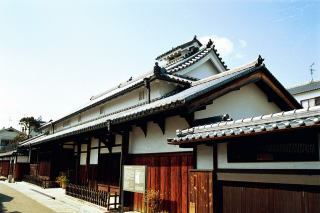 |
Open to the Public (公開) An important cultural property of Japan registerted in 1983 This is the main tourist attranction in the historical district and is called landmark of the town. About 9 thousands visitors make a visit of the old residence annually. including elementary students excursion trips. A video presentation is conducted at the entrance hall to let visitors know the history of Jinaimachi town and a profile of a tanka poet, Ms. Tsuyuko Isonokami. Some "Kirie" artcrafts made by Mr. Kondo are also displayed upstairs. |
| Location: Tomisuji St. and Gobou-machi St. (Local area map) |
|
| History: The Sugiyama family is an old family, which
continued for generations from the foundation of Jinaimachi, and successive
heads of the family used name Chozaemon Sugiyama. They administered the town as
one of the Hachinin-shu (8 administrators) throughout the Edo era. |
|
| Old documents of Sugiyama family: Old documents of Sugiyama family is introduced and displayed at the museum of Kyoto University as "Documents of villages" and "Documents of brewerers". |
|
| Architectural design and structures:
The residence plan in the Edo era shows that the vast building site occupied one block of the town., and that there were more than 10 buildings such as the main house with 4-layer roofs, a kitchen-cum-workshop with a cooking stove ("Kamado"), sake sellers and storehouses built side by side, including landscape gardens. The layout plan indicates the family’s prosperity. The old merchants’s residences in Jinaimachi have plain structures like
a farmhouse rather than a town house. For example, it has a big beam, which
supports the hanging wall to stop smoke from the cooking stove. |
|
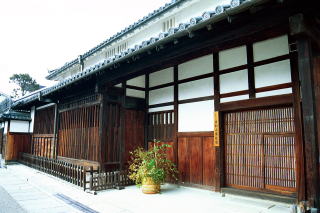 |
Main building of the residence hands down the richness and culture of South Kawachi region in old days. |
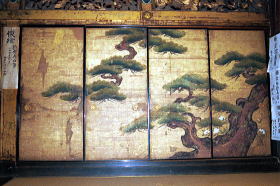 |
Kemuri-dashi koyane (An overtopped small roof for smoke ventilation) |
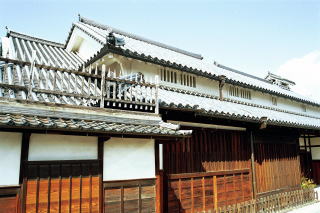 |
The premises of former Sugiyama residence were took over by Tondabayashi Municipality office for preservation and it opens to the public now. The buildings were rebuilt for repairing works to the original design and conditions. The premise was used for shooting and location of a movie production, including the title of Maihime「舞姫」(produced in 1989) directed by Mr. Masahiro Shinoda. |
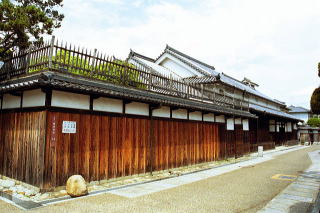 |
Shinobi-gaeshi (Board fence on top of the wall with sharpened sticks) |
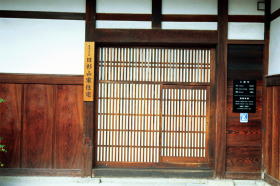 |
Main entrance with a small sliding door |
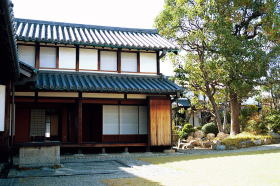 |
Paper-screen sliding doors ("Shoji screen") and a stone-framed of a well beside the building. |
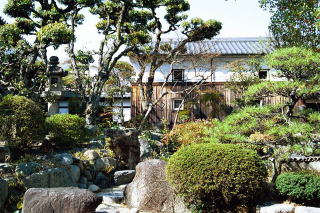 |
Landascape garden |
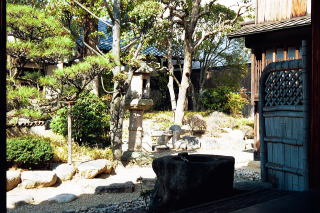 |
Landscape garden Side fence for blinding ("Sodegaki", right ) A stone-carved basin for handwashing ("Chozubachi", center) |
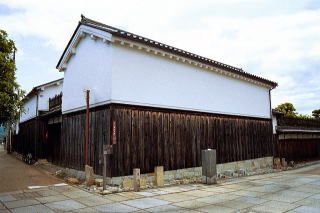 |
Storehouse |
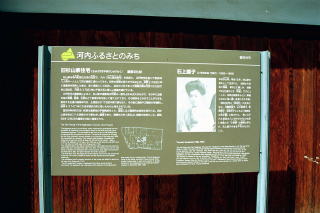 |
Ms. Tsuyuko Isonokami Isonokami’s actual name being Taka Sugiyama, she was born to Sugiyama famly in 1882. She was a tanka poet belonging to the Myojyo School and was famous for her beauty, sung in a folk song as “a daughter of a brewer in Tondabayashi, the most beautiful in Yamato and Kawachi regions”. Her prideful personality which confronted the contradiction of those days symbolizes the spirit of freedom, and is still living in the mind of the people. There is a study circle activity of Ms. Tsuyuko Isonokami「a study circle of Ms. Tsuyuko Isonokami」 in Jinaimachi, Tondabayashi. |
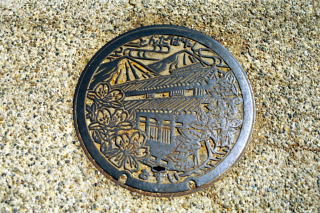 |
A decorative design of manhole cover As a part of landscaping, utility poles were moved backward to the inconspicuous position. The manhole covers have such designs as the landscape of Jinaimachi and Kongo Mountains. The decorative manhole covers can be seen everywhere in the city. Would you "watch your steps" in the Jinaimachi town for a short while? |
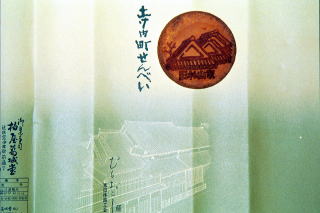 |
Jinaimachi sembei are egg-flavoured cookies featuring the characteristic designs from the historical landscape in the town, such as an old temple and town house. Picture postcard set of Mr. Kondo's "kirie" artcrafts, is available for sale both at the souvenir shop in the former Sugiyama residence and at Tondabayashi city office . . |
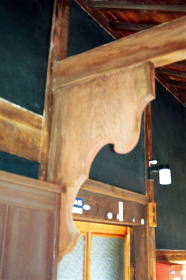 |
Jinaimachi Center Located at the oposite of former residence of Sugiyama family. (addmission is free of charge) There are no visitor parking lots available within the historical district. |
富田林・寺内町の探訪 ・ "Visiting Tondabayaahi Jinaimachi" (Back to Top Page) (c) Copyright 2002 by Naoya Okutani , edited in Japan All rights reserved |
|